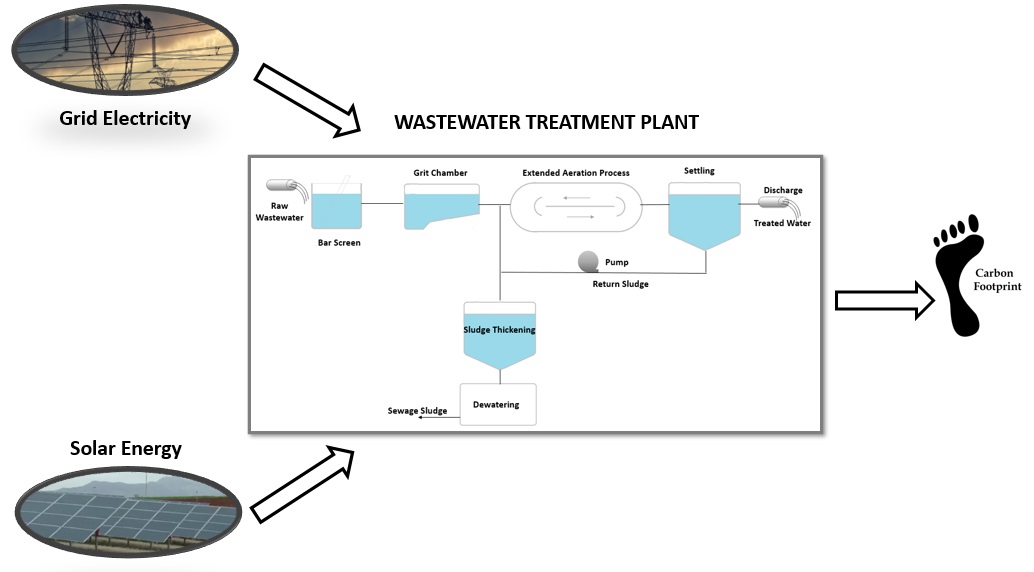
Wastewater treatment plants (WWTPs) consume large amounts of energy and thus cause an increase in carbon footprint. For this reason, it has become important not only to meet the discharge criteria in treatment plants, but also to reduce the carbon footprint resulting from treatment processes and energy use. In this study, the effect of supplying the energy required by a real domestic biological wastewater treatment plant from a photovoltaic (PV) system on the reduction of its carbon footprint was investigated. For this purpose, the annual energy consumption profile of the plant was prepared, and direct emissions from treatment processes and indirect emissions from electricity consumption were calculated for 2020 and 2021. Indirect emissions contribute 54% and 69% to the total carbon footprint of the plant for 2020 and 2021, respectively, while direct emissions contribute 46% and 31%. With the partial transition of the plant to a PV system in 2021, annual electricity consumption decreased by 401,000 kWh/year and the carbon footprint decreased by 21% to 819 tCO2e. In this way, the plant also achieved 40% economic savings. If the plant meets all the energy it needs from the PV system, it will reduce its carbon footprint by 45%.
Total file downloads: 7